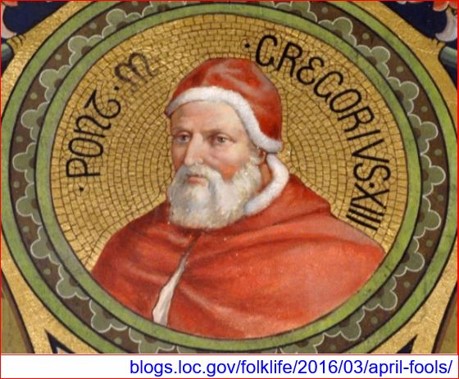
Despite his ecclesiastical and secular power Pope Gregory XIII. did not have the freedom of choice in redefining the leap rules of the old Julian calendar because astronomical calculations and ecclesiastical tradition limited his options.

In Pope Gregory’s modified Julian calendar, in the Gregorian calendar still in use today, 4 October AD1582 was immediately followed by 15 October. Ten calendar days were deleted.
This jump forwards eliminated the ten calendar days accumulated backwards over the centuries. Of course, the order and rhythm of the seven days of the week, which was a basic expectation, must not and did not change.
In Gregory’s years, it was well known that the VEQ day in the Julian calendar moves back one day every 128.17 years. Pope Gregory was aware that in AD1582, the vernal equinox had already shifted back to 11 March in the calendar. From old, secret church documents, he also had to know that Julius Caesar had introduced his calendar reform in 176CE.
From this data, the following calculation is derived: 1582-176 = 1406 years elapsed, of which 1406/128.17 = 10.97 days had to be cancelled.
Therefore, this calculation would correspond to the skipping of 11 days instead of 10.
In astronomical terms, the 11 days could also have been considered because in the years before 1582, VEQ fell every two years, alternately on 10 or 11 March. The tendency was 10 March to dominate soon. This indicates that at least 10.5 days would have been corrected, which is impossible in the calendar.
However, Gregory has chosen to cancel ten days because of church tradition, knowing that the VEQ day for Easter computus formally had been set centuries before on March 21. By skipping ten calendar days, the VEQ on 11 March AD1582 resulted in a VEQ day on 21 March in the following year, AD1583.
Gregory (following the suggestion of the mathematician and astronomer Cristopher Clavius) decreed those only years divisible by 400 should remain leap years among the years divisible by 100. (In the earlier Julian calendar, all years divisible by 4, and thus all years divisible by 100, were leap years.) Accordingly, the years AD1600 and AD2000 remained leap years, but AD1700, AD1800 and AD1900 were not leaping years.
Pope Gregory stabilised and clarified the Gregorian calendar with this leap year amendment. The Gregorian calendar (as opposed to the 128 years of the Julian calendar) is only “off” by one day every 3320 years in terms of the VEQ day date.
If Pope Gregory had omitted 11 days, he would have overcompensated the date of the VEQ to 22 March 1583.
However, by omitting ten days, Pope Gregory under-compensated the calendar.
In 1582 it was impossible to correct the calendar accurately by omitting either 10 or 11 calendar days. If Gregory could have waited about 60 years to introduce his new calendar, he would have had to delete 11 days from the calendar. In that case, the Gregorian calendar would be more accurate today concerning keeping the VEQ date on 21 March.
Gregory did not consider that the leap year in AD1600 would move the VEQ day back by one day somewhat earlier than necessary. Therefore, for many years since the beginning of the 1600s, the VEQ day fell on 20 March and sometimes even 19 March.
The same under-compensation (of about half a day) results in VEQ day falling on 20 March and, in some cases, even soon on 19 March in the early 21st century.
